A good headtorch is an essential piece of kit for anyone heading out on the hills in the UK.
Mountain rescuers say many of their callouts are to walkers or climbers who get caught out by darkness either because their route takes longer than expected; they are delayed by an incident or injury, or they just underestimate the time it’s going to take to get back down to the valley.
And then, there are those who choose to go out at night. It’s a very different experience from daytime walking and, as long as you are confident in your night-navigation techniques, allows outdoor enthusiasts to revel in the joys of venturing out under a starry sky.
And anyone camping, whether wild or on a site, is well advised to pack a headtorch, keeping your hands free to do what you need to do.
We put nine different models to the test out on the hill, ranging from basic budget torches to high-tech and high-power units.
Whichever you choose, make sure it goes with you when you head out.
Black Diamond Icon
Price: £75
Maximum brightness: 200 lumen
Weight including batteries: 232g
Batteries: 4xAA alkaline, lithium or rechargeable
Modes: 3 plus red
Country of manufacture: China
The Black Diamond Icon is the big beast of this test, packing a powerful 200 lumen main beam in a sturdy metal housing.
The four AA batteries are contained in a separate compartment that sits at the back of the head. This is well sealed against the weather and the whole thing is rated at IPx7, which means it will still function after a 1m submersion for 30 minutes.
To aid comfort, the Icon has a top head strap. The main headband and the top band are easily adjustable each by a single buckle. The connecting lead is part coiled and held in place on the headband by two plastic retainers.
The whole item feels very robust, an observation borne out by its weightiness on the scales, at 232g more than twice the weight of the next heaviest contender.
Despite that, the Black Diamond headtorch is comfortable in use, the battery box balancing well, especially if the top strap is adjusted correctly.
There isn’t a huge amount of adjustment vertically on the main housing, which has just four soft clicks between horizontal and about 45 degrees down. It’s barely low enough at the lowest setting to do close compass or map work without lowering the head a fair amount.
The Icon has one very bright, quad-power LED in the centre and a pair of single-power LEDs either side, the latter providing a good wide flood for proximity work and the former an impressive spot that pierces the darkness to a good 100m.
Control is very simple via a single press button on top of the housing which can be used while wearing gloves. One press turns on the spot; press again and the unit turns off; a third press turns on the pair of proximity LEDs. Holding down the button for three seconds puts it into red mode.
While the Icon is turned off or in red mode, pressing the control three times turns on the strobe mode.
With the exception of the strobe, the beam can dimmed in all modes by holding down the switch. At the brightest or dimmest setting, the torch flickers before cycling back up or down. This means that whether you’re using the Icon in distance or proximity mode, you can adjust the brightness to the level required. This is particularly useful if you don’t want to blind your buddies while using the spot mode if you stop for a chinwag or navigation confab.
Dimming the beams also obviously conserves battery power too. Both modes go down to a fairly miserly 4 lumen, with the distance quad delivering its full 200 lumen at the other end of the brightness scale, while the proximity pair provides 35 lumen.
Oddly, there’s no battery advantage in using the two single LEDs at full power over the distance spot: both will provide a creditable 75 hours, though after 10 hours of use on the quad LED, it will only be illuminating to 15m rather than the 100m with fresh batteries.
The proximity LEDs should give a consistent 10m beam for the full 10 hours.
At its brightest, the red LED will illuminate about 6m.
In use, there’s a great temptation to use the full power to light up 100m of trail ahead, even though you don’t need to. In reality, the Icon is best used by dimming the required beam to the brightness you need, and saving the real power for brief periods when you need to pick out detail for navigation or route-finding.
The full-power quad LED is easily bright enough for mountain bikers and for runners too, though they may find the weight of the Icon not to their liking. Black Diamond’s climbing pedigree is evident in this headtorch, and you can imagine it performing well on tough Scottish winter routes or Alpine climbing trips.
The Icon will cope admirably with all walking situations too.
The ruggedness of the Black Diamond headtorch should mean it gives years of service too. The battery housing is part metal, part plastic and the lid has a double seal and is secured by a very firm locking spring-loaded catch. The lid is tethered by the connecting lead when taken off, so won’t be dropped in the dark. The main lamp unit is also a combination of metal and plastic. The only grouse with it is the rather less than firm clicking into position and the limit of movement downwards.
Holding down the control button for six seconds locks the unit so it doesn’t turn on while in your rucksack.
If you can put up with the weight of the Icon, its power and versatility will cope with almost all situations in the outdoors.
Brightness 27/30
Ease of use 17/20
Functionality 16/20
Comfort 7/10
Quality 8/10
Value for money 6/10
Total 81/100
Coleman CHT15
Price: £30
Maximum brightness: 150 lumen
Weight including batteries: 108g
Batteries: 3xAAA alkaline or rechargeable
Modes: 4 plus red, blue and green
Country of manufacture: China
The Coleman CHT15 is the most powerful in the CHT range, and packs a powerful 150 lumen maximum at a very reasonable price.
The plastic headtorch housing is fairly chunky and the CHT15 comes with a single headband. The battery compartment is accessed via a rotating cover with a slot into which a protruding key on the headband buckle fits. The three batteries are then contained within a cartridge, so changing them in the dark on the hill could be a protracted exercise.
All functions of the torch are controlled by a single, fairly large push button on top of the housing which we managed to use while wearing gloves.
There are three levels of brightness with the maximum providing a beam that penetrated to about 60m on our test. Keeping the CHT15 on at this rate will exhaust the batteries in about six hours. The lowest level, offering 35 lumen will stretch battery longevity to 27 hours. We found the medium and low levels did provide enough light for normal walking, but anything quicker would need the full power.
Pressing the switch initially turns on the low-power coloured LEDs: red first; then another click turns on the blue, with a third press switching on a green LED. We’re a bit dubious of the necessity of having three different colours in the torch, but night-vision retention is not as simple as just using red. Reading map detail works best in red light, but the contour lines are difficult if not impossible to see. Switching to blue or green does make them instantly stand out, but at the cost of other detail. So maybe the three colours are not such a silly idea after all.
Using the push-button switch normally cycles through: red, blue, green then low, medium and full white light, with a further push turning on the strobe mode.
A final push turns the unit off. To go straight into full power without cycling through the various other modes, the button is held down for three seconds. Once any mode has been operating for 10 seconds or more, a single press on the control button will turn it off.
The unit can be tilted down in a series of positive click from level to about 60 degrees down. The headtorch was reasonably comfortable in use, though not the lightest.
It is rated for waterproofness at IPx7, which means it should resist water when immersed to a metre for half an hour.
The Coleman CHT15 offers a pretty bright beam at a good-value price, though battery life at full power is limited.
Brightness 21/30
Ease of use 15/20
Functionality 15/20
Comfort 6/10
Quality 6/10
Value for money 8/10
Total 71/100
Edelweiss Sirius
Price: £35
Maximum brightness: 120 lumen
Weight including batteries: 94g
Batteries: 3xAAA alkaline or NiMH rechargeable
Modes: 6
Country of manufacture: China
The Sirius has two sets of LEDs: the central spot and two flood LEDs either side of it. On full power the spot can pick out objects about 90m away. Drop it to the medium and this still lights up detail about 70m away. The third, ‘eco’ position drops the brightness another step to give reasonable illumination to about 25m.
Control is by a single push-button on top of the housing, with successive clicks cycling through the distance focus modes: standard, full power, eco, then on the fourth click switching to the two floods, with standard power then low. A sixth click puts the Sirius into strobe mode and a seventh turns it off.
The unit would be improved by having a facility to turn it off straight away, rather than having to press it up to six times, cycling through all the modes, before it switches off.
The Sirius does not have a red mode.
The Edelweiss torch is fairly lightweight and the single headband was comfortable. The housing clicks downwards through five positions from level. A further couple of clicks beyond the lowest would be useful for very close map-reading work, though the flood LEDs give a very even spread of light for proximity use.
The Sirius has a very useful 50-hour rating on full power spot before it gives up the ghost. Medium setting should last 78 hours and the lowest, eco, 240 hours.
On flood settings, the full power gives a nice even light up to 5m or 6m and battery duration is rated at 110h, just five hours longer than on eco power, which cuts its output to 7 lumen.
Batteries are housed in the main unit and are accessed by a clip which allows the front of the unit to be tilted forward to the battery chamber.
The Edelweiss Sirius is a sturdy-feeling, simple headtorch that gives a very useful spot beam at a reasonable price. Illumination is good for all walking activities and runners should find the 90m spot useful, as will cyclists. For climbers, the flood might be enough for close work and the spot used for picking out more distant features when route finding, though the necessity of clicking through all the modes could prove irritating.
The Sirius is waterproof to IPx6 rating.
Brightness 22/30
Ease of use 13/20
Functionality 14/20
Comfort 7/10
Quality 8/10
Value for money 8/10
Total 72/100
Petzl Tikka R+
Price: £70
Maximum brightness: 170 lumen
Weight including batteries: 112g
Batteries: built-in rechargeable lithium-ion
Modes: 6 plus red
Country of manufacture: Bulgaria
Petzl’s reactive lighting range has been expanded from the original Nao to include versions of the popular Tikka series.
The Tikka R+ delivers a maximum of 170 lumen in its boost mode, which gives a short, 10-second, boosted beam for picking out distant features.
Petzl rates this distance at 65m which is about right. Certainly we could pick out objects at 50m on a dark night.
It’s the reactive lighting system, though, that marks the two Petzl headtorches in this test. A light sensor in the front housing measures the amount of light bouncing back into the unit and adjusts the power and pattern of the beam.
So, for instance, if you stop to check your map, as you look down the single LED beam brightness is reduced and it changes to a wider flood for proximity work. This cuts down on the manual fiddling with buttons or knobs you have to deal with on a conventional headtorch, which is useful when wearing gloves and also leaves hands free to concentrate on more important things.
As with all the headtorches in the test, it pays to gen up on how to operate them at home or in the light, rather than trying to work it out in the pitch dark.
The R+ has two controls, one on top of the housing and one on the side.
Pressing and holding the top button for 2 seconds unlocks the unit. Doing the same again turns it off and locks it to stop accidentally turning it on.
Turning on the headtorch puts it into reactive mode. Pressing the side switch will then engage the constant lighting mode, which gives a fixed power useful for, say, cyclists who don’t want the torch to dim.
Press the side button again and the red LED turns on. If you turn off the R+ in red mode, it will go straight into red again when turned on, so you don’t blitz your night vision.
Another press of the side button puts the headtorch back into reactive mode.
The top button is then used to cycle through maximum autonomy, standard and maximum power, delivering up to 70, 130 and 170 lumen respectively. Maximum power will use up the battery in about 3½ hours, so would be useful for a shortish run. Maximum autonomy should give 12 hours of light, with standard providing about six hours.
In constant lighting setting, there are similar burn times, with the headtorch delivering constant regulated brightness until dropping to a one-hour reserve that delivers about 25 lumens.
As if this isn’t versatile enough, you can download Petzl’s OS software to tweak burn times and brightness.
In practice, we found it best to switch on the R+ to reactive lighting in maximum autonomy mode and the torch will do the rest. The beam provides the required brightness at between 7 and 70 lumen and will provide the longest battery time.
On the hill in the dark, the R+ provides good lighting for general walking, with about 30m to 40m illumination. This is probably just about enough for faster moving activity such as running, but for mountain biking, switching to maximum power or constant lighting is a better option.
The housing is fairly chunky but the headband is comfortable and adequately padded. The housing is adjustable downwards in clicks to almost vertical. The buttons on the top and side are usable, just, while wearing gloves, but they are quite small and we found it was easier just to slip off the glove when adjusting – not good if it’s –15C in a gale.
The red mode is quite dim, giving about 2m illumination.
The obvious attraction of the reactive range is the ability to turn it on and let it do its own thing, but that comes at a price. This is the entry-level Petzl reactive technology headtorch, but it still comes near the top of our test for price. If you want the optional battery holder for alkaline batteries, you will have to fork out an extra £8.50. You can also buy extra lithium-ion packs to charge up and have with you to slip in if you run out of power.
The Petzl R+ is waterproof to IPx4 standard. Charging the lithium-ion pack takes about four to five hours via the USB socket, a little longer if charging from a computer.
Brightness 22/30
Ease of use 14/20
Functionality 17/20
Comfort 7/10
Quality 8/10
Value for money 5/10
Total 73/100
Petzl Tikka RXP
Price: £90
Maximum brightness: 215 lumen
Weight including batteries: 112g
Batteries: built-in rechargeable lithium-ion
Modes: 6 plus red
Country of manufacture: Bulgaria
The Tikka RXP is the big brother (or sister) to the R+, delivering a more powerful 215 lumen maximum in a short 10-second boost.
The controls work in the same way as the R+ (above). The main difference is the addition of an extra spot LED which kicks in when needed.
The pay-off, as the RXP uses the same battery pack as its less powerful, similar-looking relation, is that battery life is reduced.
In the truly automatic, ‘maximum autonomy’ reactive mode, you should squeeze about 12 hours’ use from one recharge. The 80 lumen maximum in this mode allows detail to be picked out about 70m away, with the mixed beam also providing a good wide illumination in the near field.
On maximum power in reactive mode, the RXP should last 2½ hours on a charge, good for a walkout from the mountain as it gets dark.
Both the Petzl reactive torches work well at dusk and dawn as the units automatically adjust to changing ambient light levels.
As with the R+, a double click on the top button gives a 10-second boost, with the full 215 lumen beam illuminating details 100m away.
We switched from the R+ to the RXP out on the hill at night and the increase in power was immediately noticeable and the mixed beam was much better at that mid-distance that a runner would need to route find. The red beam was also brighter, reaching about 3m into the dark.
The RXP shares the same buttons with the less powerful model. They’re small and not easy to use with gloves. Bike riders and others who don’t want the torch to dim automatically can select the constant lighting mode.
Both models will flash and then turn off if you go into an environment where there’s enough light not to need the torch.
The Petzl RXP costs £20 more than the R+. Is it worth paying the extra? That depends on your planned activity. The R+ is perfectly adequate for most general walking use; less so for faster moving outdoor enthusiasts. The battery life is also better.
But if you want the power that’s going to help you run, cycle or pick out that more distant feature on a mountain crag, we’d say it’s worth forking out for the RXP. It might just stretch to a full night on an ultra-run, at 10 hours, as long as you’re not undertaking it in winter. But we’d still pack a spare battery pack.
For comfort and ease of use, there’s no difference between the two Petzl models. The RXP can, like the R+ be programmed to adjust light output in different reactive modes using the Petzl software, by hooking it up to a computer using the supplied USB lead. Both have the new headband which has a double strap at the rear, though the longer you adjust the band, the less useful this is.Brightness 25/30
Ease of use 14/20
Functionality 18/20
Comfort 7/10
Quality 8/10
Value for money 5/10
Total 77/100
Princeton Tec Sync
Price: £34.95
Maximum brightness: 90 lumen
Weight including batteries: 84g
Batteries: 3xAAA, alkaline, lithium or rechargeable NiMh or NiCad
Modes: 4 plus red
Country of manufacture: USA
The Princeton Tec Sync is the lightest, just, in the test and has a single adjustable elastic headband, and its batteries are enclosed in the main unit.
The light unit, which uses two LEDs, has a single bracket on the left, with the battery compartment accessible at the opposite end via a hinged cover which has a firm plastic clip to keep it closed.
The light barrel rotates up and down through a full 180 degrees with a series of click positions. At the opposite end to the battery cover is the headtorch’s control, a rotary switch that has the following positions: locked, red, off, low flood, high flood, spot, dual beam, the last of which activates both LEDs for maximum illumination.
The rotary switch was fairly easy to use, and it was possible to operate it while wearing thick winter gloves.
The red mode gives a reasonable light while helping retain the user’s night vision. A good 3m was illuminated even after the headtorch had been turned on for a considerable time. As with all red lighting, contour lines on standard OS maps are not easy to read.
The low flood setting gives a good enough beam for normal walking speed and will give maximum battery power. Features 20m away were illuminated at this setting. This increased to about 30m in the high flood mode and something like 50m in spot mode. There was little advantage in turning on the dual beam, which will gobble battery power.
At the low flood setting, Princeton Tec rates the Sync as capable of delivering 150 hours of illumination, though it’s important to note that this would bring the brightness down to 0.25 lumen – about the same as the light of a full moon – the absolute minimum we’d want to walk with and certainly not enough to run or cycle safely. With the dual beam in operation, the stated time to reach that level of illumination is 75 hours.
Brightness 18/30
Ease of use 14/20
Functionality 14/20
Comfort 7/10
Quality 7/10
Value for money 7/10
Total 67/100
Silva Ninox II
Price: £55
Maximum brightness: 140 lumen
Weight including batteries: 86g
Batteries: 3xAAA, alkaline, rechargeable NiMh or lithium
Modes: 3 plus red
Country of manufacture: not stated
The Silva Ninox II is a compact, lightweight and relatively simple headtorch with an easy-to-operate big button on the left side of the barrel-shaped housing.
We had no difficulty operating the switch while wearing gloves.
One push turns the torch on to full power; press again and it drops to minimum mode; a third press sets the LEDs blinking and pressing it again cycles it back round to full power again.
Holding the button in for at least a second turns it off. To illuminate it in red mode, turn the unit on by holding the button in for two seconds.
The housing rotates continuously, with no click positions, through 180 degrees, from straight up to straight down. The headband has a thin rubberised strip on the inside face of its elasticated fabric to help stop it slipping down and the strap is adjustable via a plastic buckle which also has a protruding lug that slots in to the battery compartment cover to enable it to be turned to open it.
The batteries slot in to the opposite end of the main housing, but the cover isn’t captive, so if you drop it in the dark you might have difficulty finding it again. And good luck trying to see the tiny markings within the housing that tell you which way to slot in the batteries.
For a small unit, the Ninox II which is an update of the original less powerful Ninox model, packs a good bright beam. Its 140 lumen full power mode picks out objects up to about 70m, while the minimum light, proximity mode is good for about 20m. The red LED is fairly dim, struggling to penetrate much more than 2m.
The combination of a flood and spot LED gives a good even near lighting while picking out more distant objects with the centre of the beam.
Silva’s stated battery times are: 30 hours on maximum; 90 hours on minimum and 100 hours on flashing mode.
The Ninox II is waterproofed to IPx7 standards.
The Silva headtorch has a bright enough beam on full power for all walking applications and night runs.
Brightness 21/30
Ease of use 17/20
Functionality 14/20
Comfort 7/10
Quality 7/10
Value for money 6/10
Total 72/100
Suprabeam V3 Air
Price: £40
Maximum brightness: 250 lumen
Weight including batteries: 152g
Batteries: 3xAAA, alkaline or rechargeable NiMh
Modes: 3
Country of manufacture: China
The V3 Air is a tough-feeling little headtorch with an anodised aluminium body with a separate battery compartment that sits at the back of the head.
Its solid construction bumps up the weight to 152g, but there’s a detachable top elastic headband to help bear the weight, and the torch was comfortable in use.
Access to the battery compartment is very easy, via a water-resistant cover and the power is then supplied to the main LED housing via a part-coiled lead which has a Velcro-fastening sheath part way along to hold it in place.
The torch housing adjusts downward from the level position in six soft clicks to a full 90 degrees.
There is one single control for the light, a small button on the bottom of the housing which was a little difficult to click easily while wearing thick gloves.
The first time the V3 Air is used, the torch will come on at normal full power. Holding the control button in will then dim it to the required level of brightness, cycling from bright to dim and back again as long as the button is held in, from 8 to 150 lumen. Pressing it again gives the boost setting, delivering the full 250 lumen. A further press switches the torch into SOS mode, and it actually flashes three short, three long and another three short bursts, spelling out the letters in Morse code, though of course, the recognised distress code is six flashes then a minute’s rest.
There is no red mode.
A feature of this Suprabeam headtorch that was really useful is the zoom function. This is a simple sliding metal sleeve containing a lens and reflector which is very easy to use. Pull it all the way back and the V3 Air gives a wide, 60 degree flood beam; zoom all the way in and it produces a concentrated 6 degree spot that is great for picking out distant features.
Suprabeam rates the distance with the spot at 195m and though we can’t say we could pick out much at that distance, it did reach beyond 100m on a very dark night.
The zoom function is very simple and easy to use and can be varied continuously between the wide and spot to give just the width of beam required. Coupled with the dimming function, it’s easy to get just the right level of lighting, depending on your activity.
At full boost power, the headtorch will last a little over an hour, so we wouldn’t recommend prolonged use of this mode, though for short bursts for, say, route-finding, it’s invaluable.
At the lowest level, the torch will last just over 60 hours before it starts to tail off. Using the V3 Air on full power, rather than boost, should give about two hours of usable light. Using the Suprabeam at one of its medium settings should give a reasonable light for a good amount of time.
The Suprabeam V3 Air is rated IPx4 for waterproofness.
Brightness 24/30
Ease of use 13/20
Functionality 15/20
Comfort 7/10
Quality 8/10
Value for money 8/10
Total 75/100
Vango 1W Red Eye
Price: £15
Maximum brightness: 50 lumen
Weight including batteries: 88g
Batteries: 3xAAA (not included)
Modes: 2 plus red
Country of manufacture: China
The 1W Red Eye is very much at the budget end of headtorches.
It has two main modes, one using the central spot delivering 50 lumen and the second which switches on twin smaller LEDs at lower level for proximity work.
There is also a pair of red LEDs.
Control is via two push buttons on the top of the housing. The right button turns on the spot; a second click switches to the low-power floods and a third switches the unit off. The left switch turns on the red mode and off with a second click.
This was the only torch in our test that didn’t come with batteries supplied, so you’ll have to factor in the cost of three AAAs (or more likely four as it’s difficult to buy odd numbers) if you buy the Vango headtorch.
The batteries are in the main housing, accessed via a clip on top which allows the front to tile forward. The unit has a single headband and was only moderately comfortable. A bit of extra padding round the main unit would be useful.
The housing is tilted downwards at its highest position, about 20 degrees below horizontal, and only clicks down a further two positions, to about 40 degrees below level.
The full power spot illuminates to about 60m but the proximity flood is pretty dim, lighting up about 5m of detail.
The red LEDs are very low power, only suitable for very close work up to a metre, so activities such as map reading.
The buttons could be operated while wearing gloves.
We wouldn’t recommend the 1W for any activities faster than walking. Vango rates its headtorch as delivering 7 hours use at full power, which is poor compared to many others in the test.
On the plus side, it is by far the cheapest in the test. If the budget’s tight and you don’t envisage long stints out at night, it could be the one for you
Brightness 15/30
Ease of use 14/20
Functionality 12/20
Comfort 6/10
Quality 6/10
Value for money 7/10
Total 60/100
Best in test: Black Diamond Icon
Recommended: Petzl RXP
Recommended: Suprabeam V3 Air
For sheer power, the Black Diamond Icon came out tops. But it also won over on its sturdiness, build quality and functionality, particularly the adjustable brightness in each mode. But it’s heavy and fairly pricey, but delivers the goods out on the hill.
Petzl’s reactive light models are interesting, and the RXP was decidedly the better of the two, with a more powerful main beam. The reactive light system means you can usually just turn the headtorch on and not have to adjust, whatever the conditions. But the big minus point for the Petzl RXP is its price: the highest in the test.
Snapping at the top two’s heels was the Suprabeam V3 Air: tough, powerful and simple. We liked the simplicity and ease of use of the sliding zoom lens on the unit, which made it easy to get exactly the right coverage of beam, and quickly concentrate the LED’s light to pick out distant objects.
The Vango was the cheapest in the test but is very basic and its battery duration is not good.
All the others performed capably in the test and choice may be down to the type of activities you undertake, what your budget is and how often you’re going to be out on the hill or countryside in the dark.
But whatever you do, don’t leave home without one. You never know what might happen when you’re out there and a headtorch is an essential tool to get yourself out of trouble if you find yourself benighted.
All the headtorches were supplied by the brands.
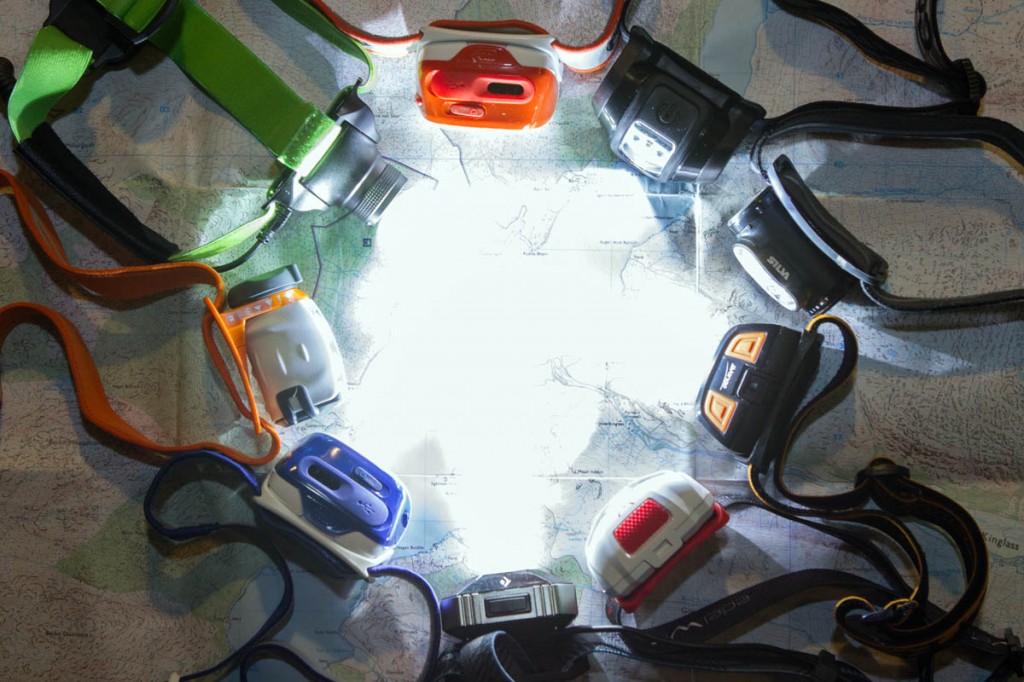
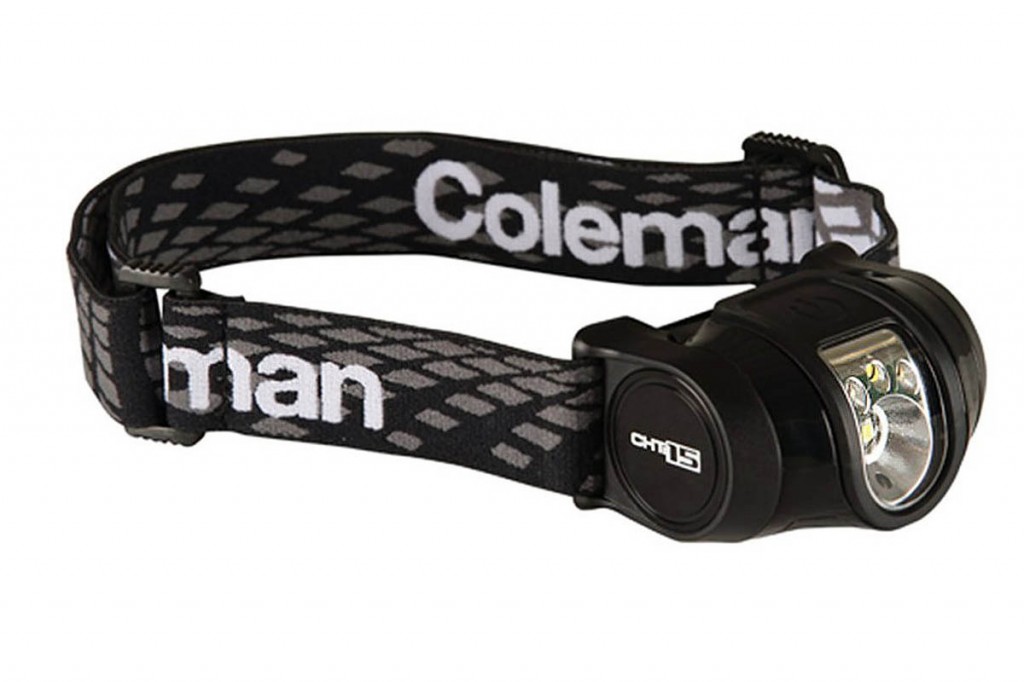
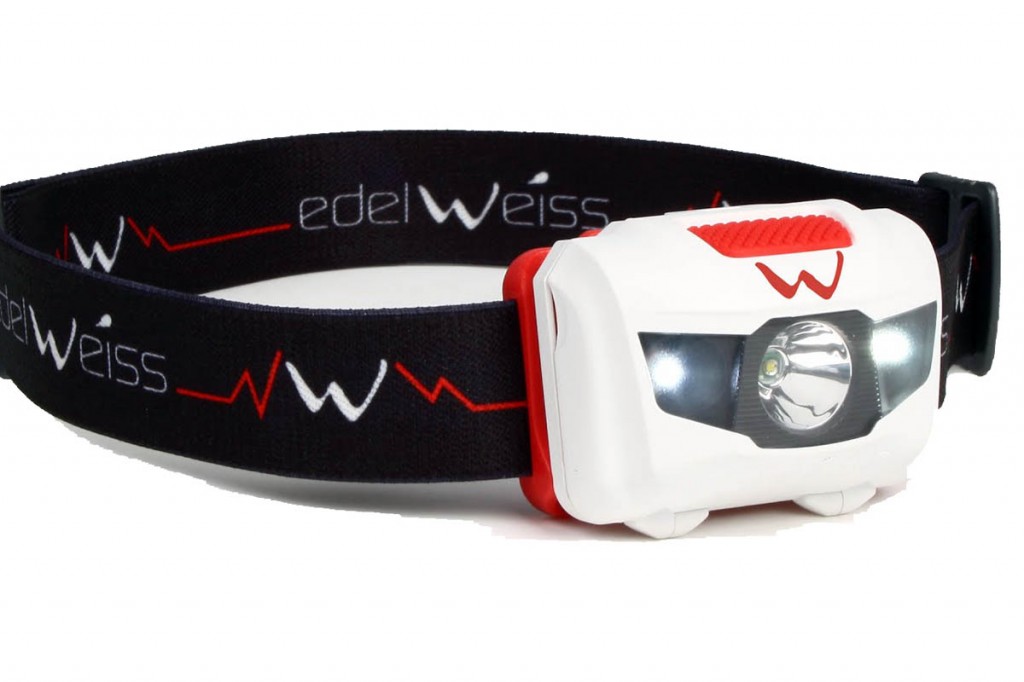


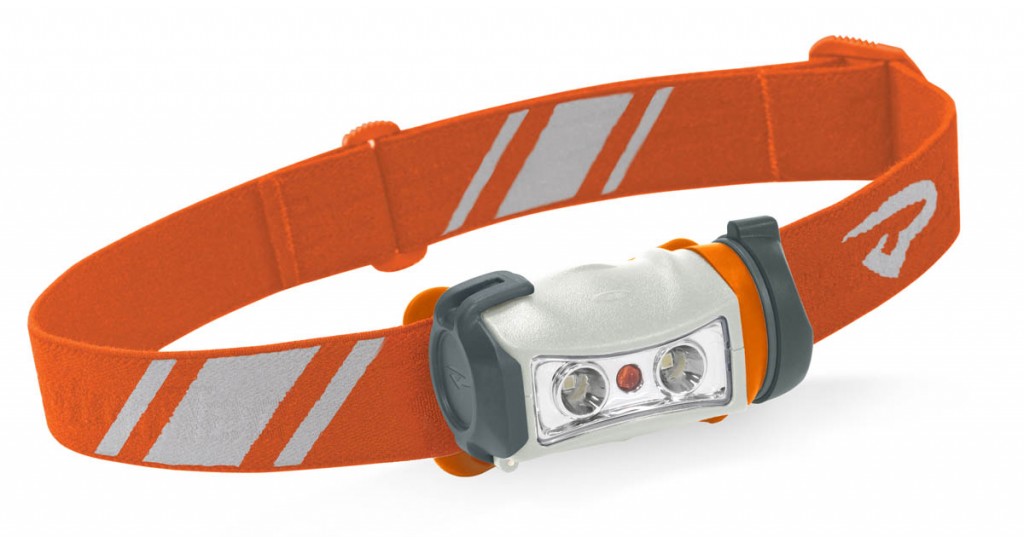
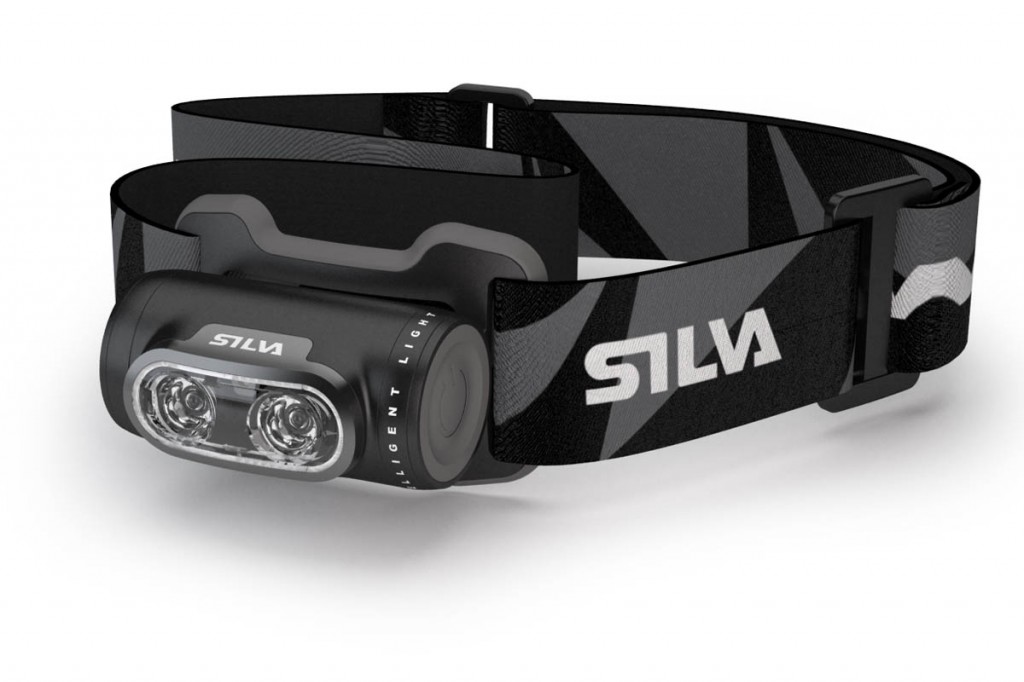

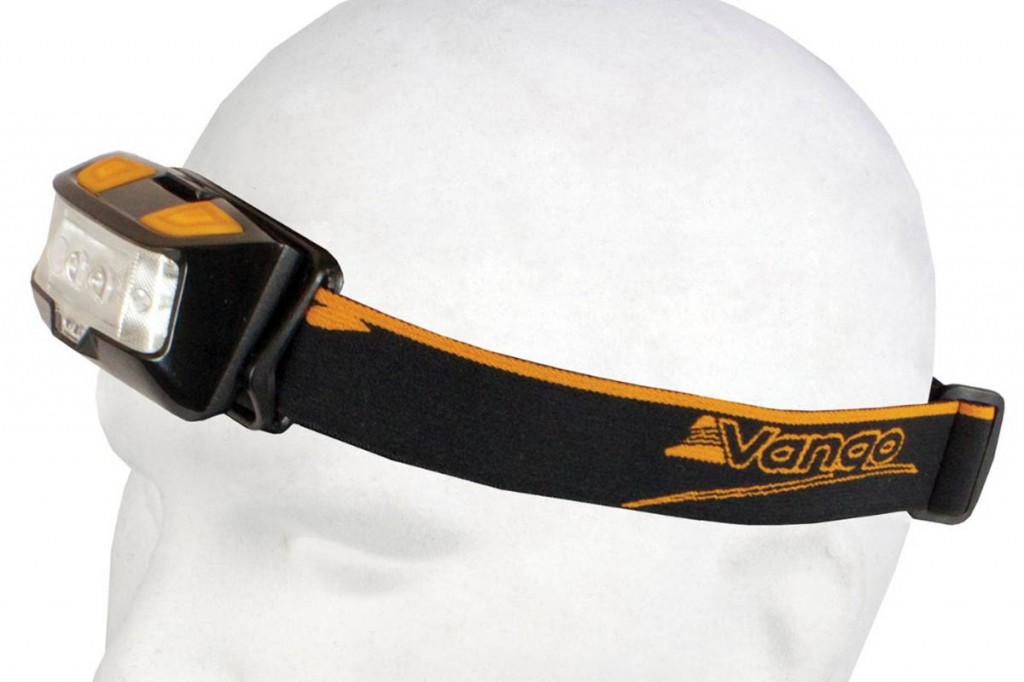
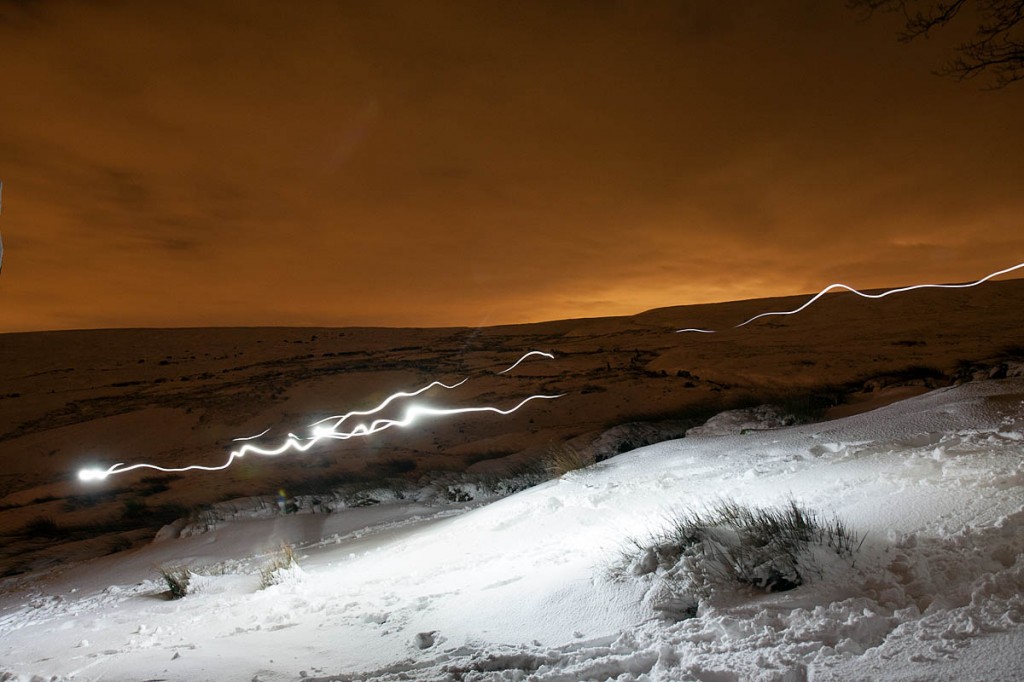
Anthony Whewell
20 February 2015Great reviews of the 'big names' but I am thinking of buying the most powerful Alpkit headtorch, so I am disappointed that it has not been reviewed here.